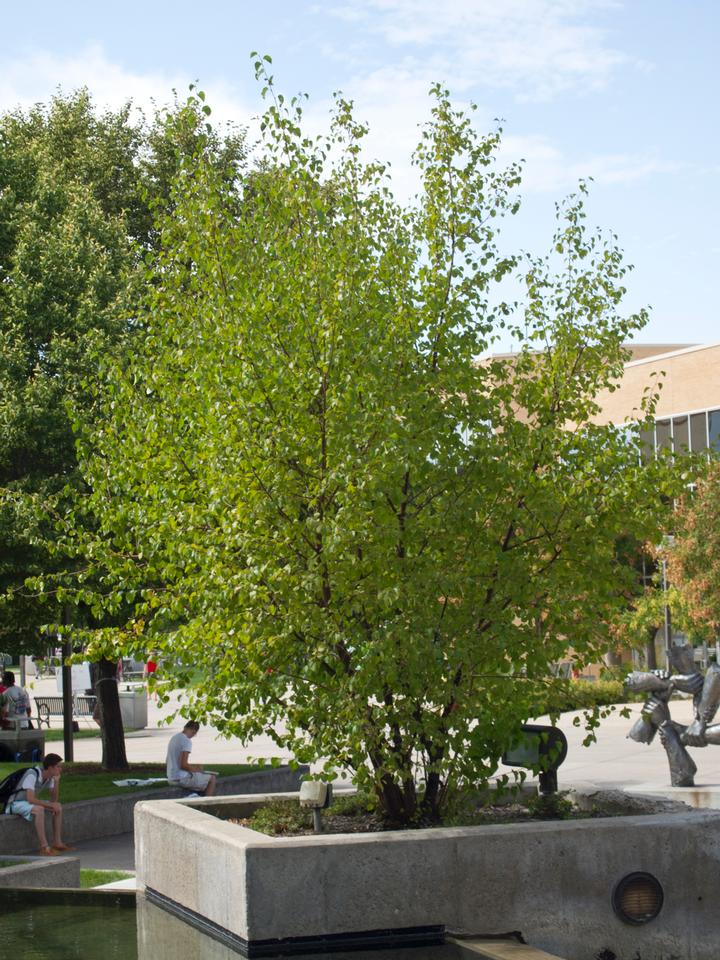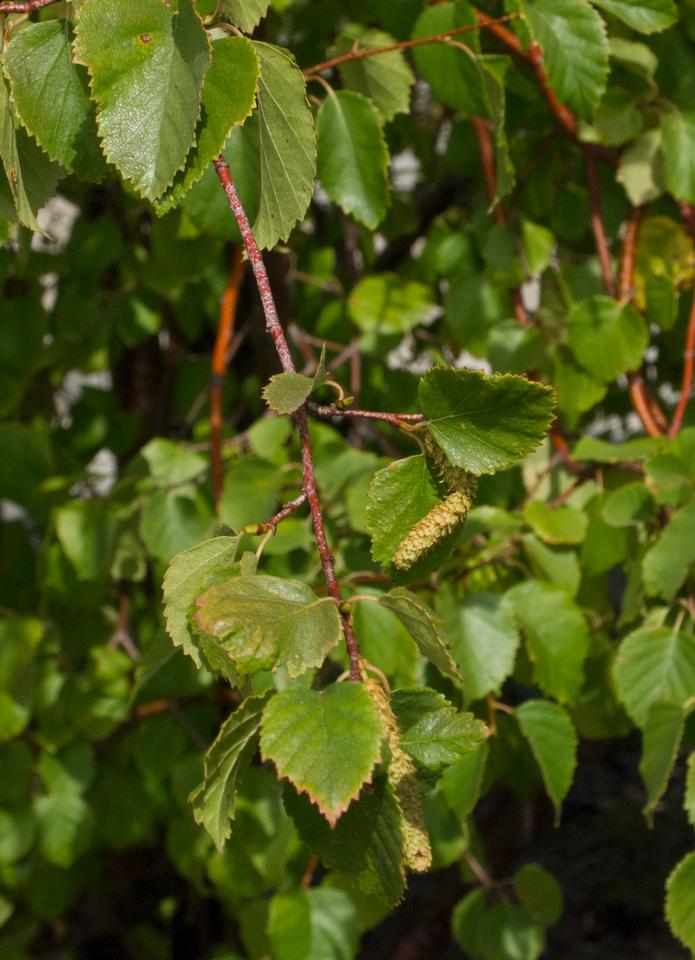Birch, Water or River
Betula occidentalis
Betulaceae - Birch
Description
Leaves: Alternate; simple; 1" to 2" long; 3/4" to 1-1/2" wide; deciduous; ovate or somewhat rounded; singly or doubly serrate margin; acute or acuminate apex; somewhat rounded base; glabrous; thin; dark green above; light yellow-green beneath; dull yellow in fall; petiole stout, 1/3" to 1/2" long.
Twigs/buds: Twigs light green when young, becoming dark red-brown; glandular when young, covered with horizontal lenticels when older. No terminal bud; lateral buds 1/4" long, pointed, resinous, brown.
Flowers/fruit: Monoecious. Fruit small, winged nutlet arranged in a cone-like catkin; cylindrical; hangs down; 1" to 1-1/4" long; scaly; matures in fall.
Bark: Thin; smooth but broken by distinct, long, horizontal lenticels; dark, shiny reddish-brown to almost purple; very characteristic.
Wood: Unimportant; seldom used. Light colored sapwood; heartwood light brown; diffuse-porous; strong; used for firewood, fenceposts.
General: Native to much of the western U.S. and southern Canada. Utah's only native birch. Occurs naturally in moist areas along streams and lakes. Usually a small tree with many stems coming from the base, occasionally up to 30-40' tall. Intermediate shade tolerance.
Landscape Use: This is a nice, multi-stemmed tree that does well when planted in Utah's valleys if very hot, dry sites are avoided. Probably more borer resistant that other birches, and able to withstand moderately high soil pH. Zones 3-7.
Comments & Limitations: Prefers abundant water, but may survive on drier sites.
Characteristics
General
| Family | Betulaceae - Birch |
|---|---|
| Cultivar Availability | No |
| Hardiness Zone | 3-7 |
| Type | Broadleaf |
| Utah Native | Yes |
Growth
| Growth Rate | Low |
|---|---|
| Mature Height | Low |
| Longevity | Medium |
| Is Good Under Power Lines | Yes |
| Crown Shapes | Shrubby |
Ornamental
| Bark | Yes |
|---|---|
| Fall Color | Yes |
| Flowers | No |
| Foliage | No |
| Fruit | No |
Tolerance
| Shade | Medium |
|---|---|
| Salt | Medium |
| Drought | Low |
| Poor Drainage | High |
| Alkalinity | Medium |
| Transplanting | Medium |









